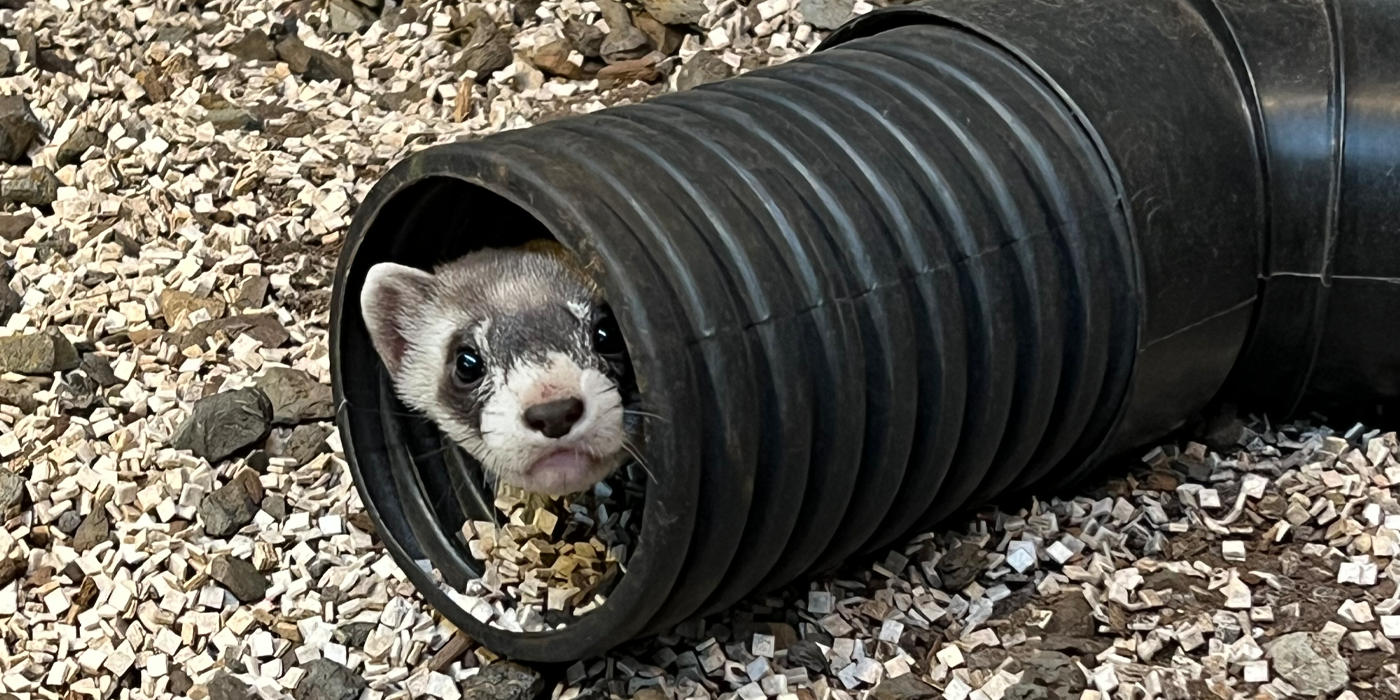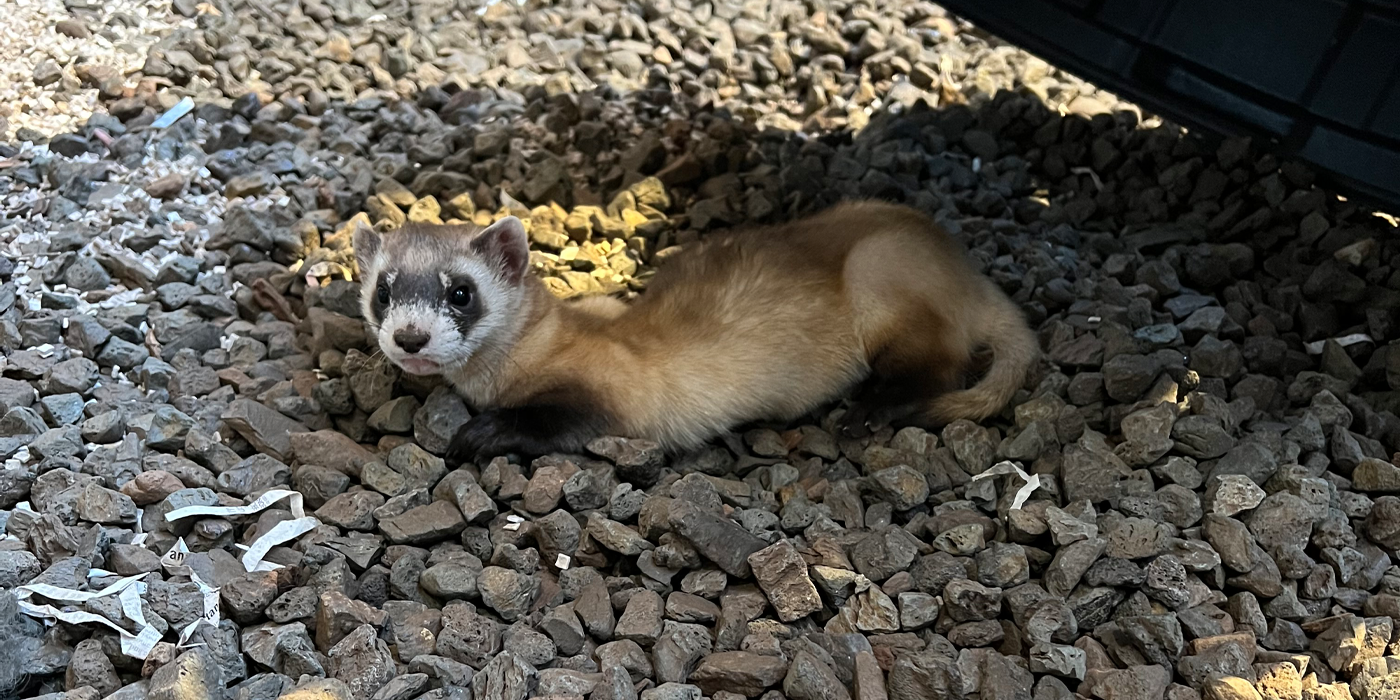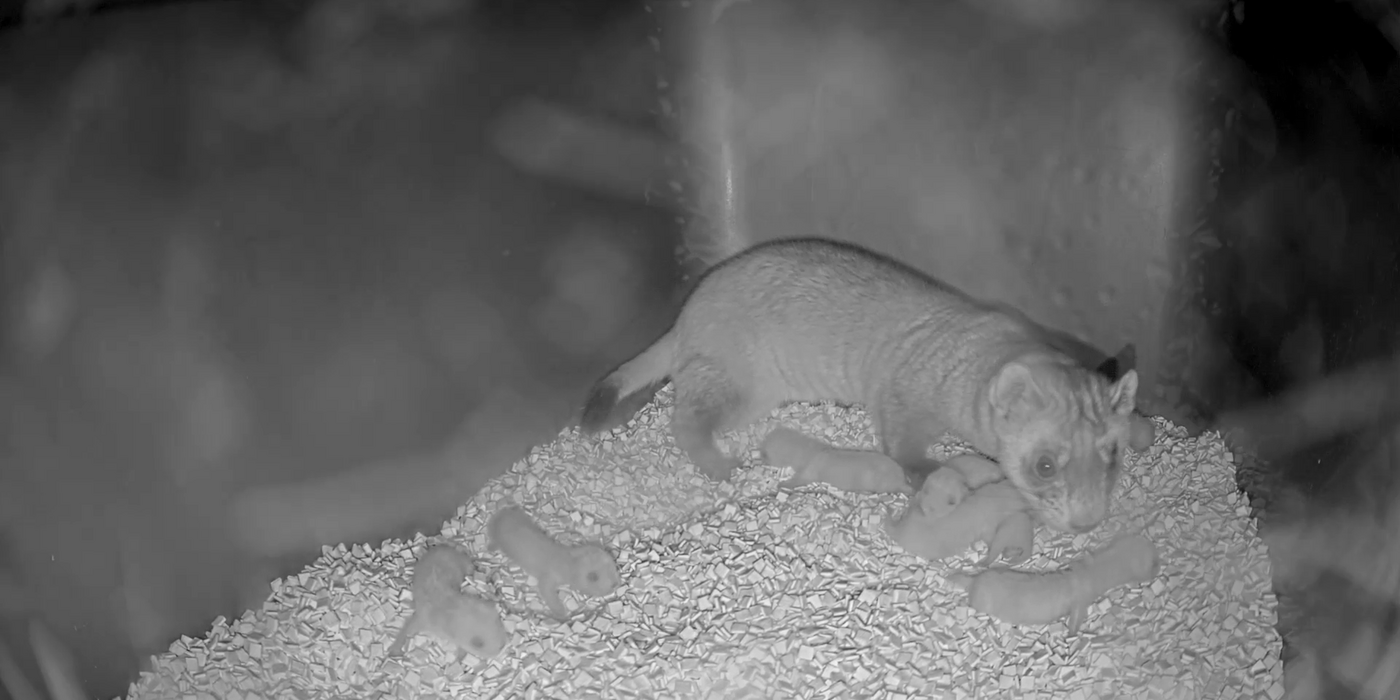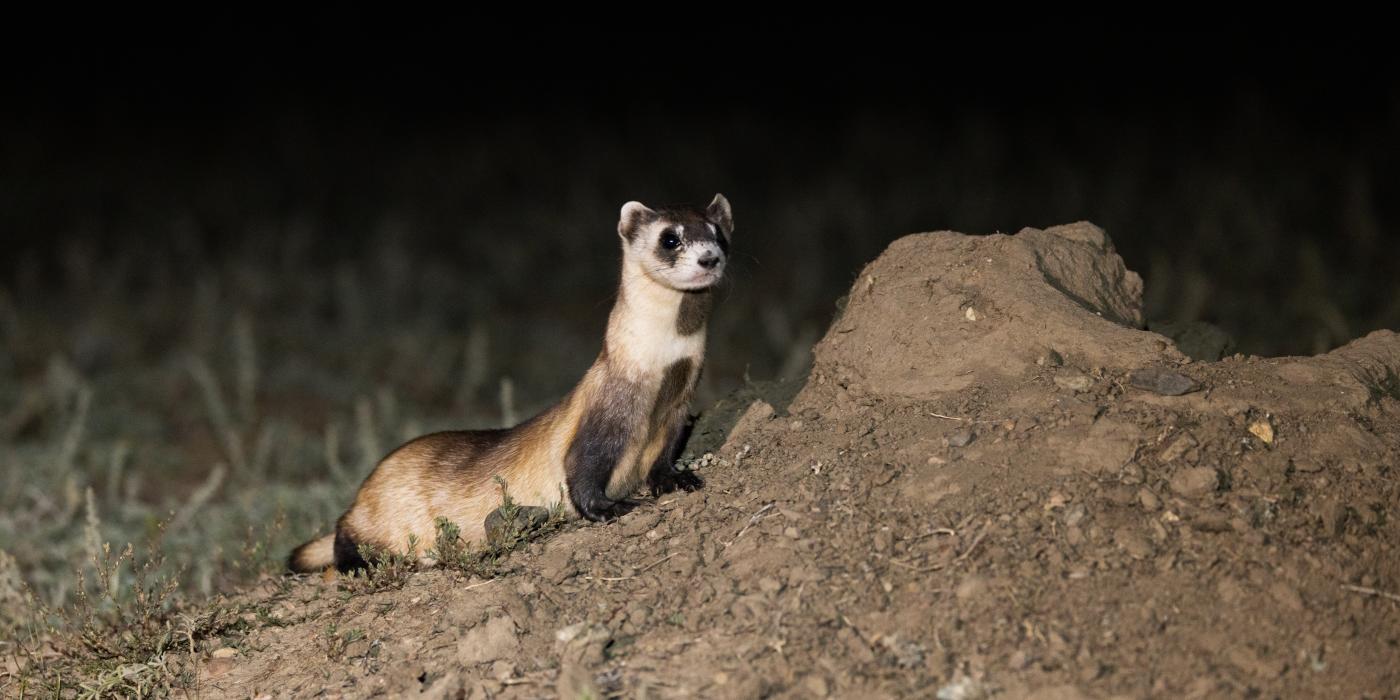Black-footed Ferret Kit Update: Vaxxed and Ready to Roll
Our newest litter of black-footed ferrets is growing up fast! Find out what it takes to care for Smithsonian Conservation Biology Institute’s (SCBI) black-footed ferrets in this Q&A with carnivore biologist Adrienne Crosier, Ph.D., as she tells us what’s new with 1-year old mom Hickory and her litter of kits.
How are Hickory and the stars of the Black-footed Ferret Cam doing?
Hickory is doing great! She and her six kits are very active and playful. The kits are starting to look more like adults, although they have a little more weight to put on before they reach adult size.
Do they have names yet?
No, but they will soon! Right now, we don’t actually tell the ferrets apart except for Hickory. We treat them as a group, just like she does.
What’s new with the kits since last month?
The kits recently had their 60-day health examinations. This milestone is a regular part of our ferret-rearing process; it’s when we evaluate their health and make sure they’re generally doing okay.
What happens at the 60-day examinations?
First, we gave each kit a transponder. This is a tiny radio chip that we implant under the skin of each animal. Fortunately, they’re not harmful, and we use them for tracking purposes if and when the kits are reintroduced into the wild.
Also, we vaccinated the kits and performed blood draws to make sure they’re free of diseases and other health conditions.
And finally, some of our scientists took fecal samples from the kits. This entails rubbing their back with soft swabs and collecting the samples as they emerge (the kits are big, so there was a little wrangling.) This is part of an ongoing research study to find out what kinds of bacteria and microbes live inside the ferrets’ digestive and reproductive systems. Gut health is closely tied to the overall health of many animals. So, by learning more about what lives inside ferrets, we can use that knowledge to care for them more effectively.

What illnesses were the kits vaccinated against?
The kits received their first of two vaccinations against canine distemper virus, or CDV. This is a viral disease that can be fatal to many species of mammals. (If you have a puppy at home, your veterinarian probably administered a vaccine for the same disease.)
We want to make sure our ferrets are protected against CDV from a young age. This is important for both for their own health and, if some of these ferrets are reintroduced into wild populations the future, for any other ferrets they encounter. They get their second CDV and also their rabies vaccine at 90 days for the same reason.
You recently started feeding them rats. How is that going?
They receive frozen-thawed rats twice a week, and then live rats at least once a week.
Ferrets that are released into the wild need to know how to hunt live prey, particularly prairie dogs. We provide the live rats to start the preconditioning process for the kits. We don’t yet know which kits from this litter will be released this fall, but we want to be sure each kit has learned the skills it may need to survive.
What’s next for the ferrets?
We still don’t know where our kits will be going yet, but we will soon!
For over 30 years, the Smithsonian’s National Zoo and Conservation Biology Institute has participated in a cooperative breeding program for black-footed ferrets. The Association of Zoos and Aquariums’ Saving Animals From Extinction program breeds the ferrets in human care, and a coalition led by the U.S. Fish and Wildlife Service (USFWS) reintroduces the animals at selected western sites in the United States, Canada and Mexico. It’s our hope that these collective efforts will allow this wonderful species to recover and thrive in their native prairie ecosystem once more.
Each year, our kits are evaluated by Species Survival Plan (SSP) scientists to determine whether they will remain at SCBI, transfer to another breeding facility or join the USFWS ferret pre-conditioning program to prepare them for release into the wild. This year’s examination takes place in August, and by September and October, the kits will be ready for this exciting new chapter in their lives.
NOTE: On Thursday, Aug. 31, we’re going to wind down our Black-Footed Ferret Cam. Be sure to tune in through the month for your last chance to watch Hickory and her kits play, cuddle and explore! Plus, stay tuned for our final Black-footed Ferret Kit update to discover what’s next for each kit.
Related Species:



